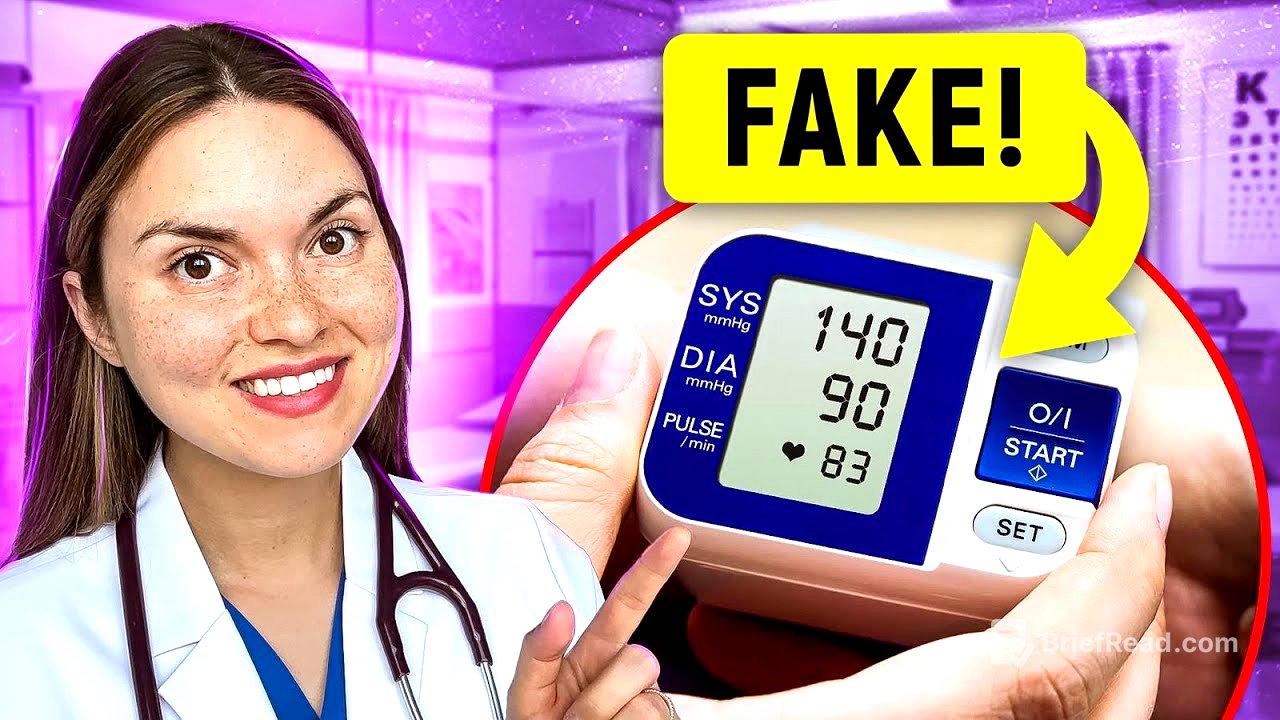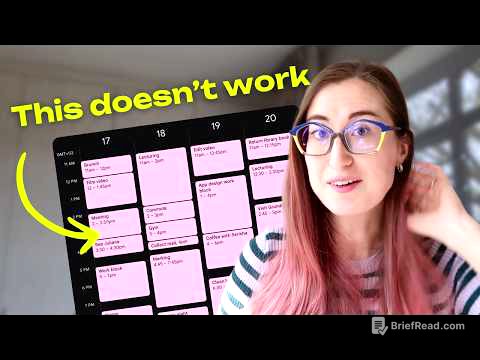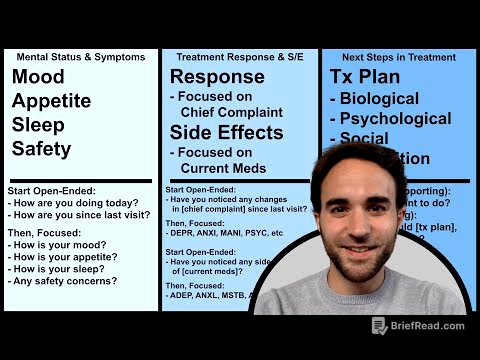TLDR;
This video addresses common mistakes people make when checking their blood pressure at home, which can lead to inaccurate readings. It highlights 11 specific errors, such as not resting beforehand, incorrect arm positioning, and using the wrong cuff size, and explains how each can significantly impact blood pressure measurements. The video emphasizes the importance of proper technique and regular monitoring to accurately assess blood pressure and manage hypertension risks. It recommends using validated monitors and consulting a doctor if average blood pressure exceeds 130/80.
- Resting for at least 5 minutes in silence before measuring blood pressure is crucial.
- Correct posture, arm position, and cuff size are essential for accurate readings.
- Avoiding caffeine and ensuring an empty bladder before measurement can prevent artificially high results.
Intro [0:00]
The video introduces the importance of accurately measuring blood pressure at home, noting that many healthcare providers may not be doing it correctly and that clinic settings can cause misleading readings. The presenter outlines 11 common mistakes people make when taking their blood pressure and explains how these errors can impact the results. The goal is to educate viewers on how to properly measure their blood pressure to get accurate readings.
Mistake 1 [0:41]
The first mistake is not resting for at least 5 minutes in complete silence before taking a blood pressure measurement. Walking into the room and immediately taking a reading doesn't allow the body to settle into a true resting state. This lack of rest can increase the systolic blood pressure (the top number) by up to 11 points. Talking during the measurement can add another seven points due to slight muscle contractions and activation of the sympathetic nervous system, leading to artificially high readings.
Mistake 2 [1:03]
The second mistake involves which arm is used for the measurement. There is usually a small discrepancy between the two arms, and the arm with the higher reading should always be used as it's more representative of the true blood pressure. However, if one arm consistently measures 10 points higher or more, it could be a sign of vascular disease, such as narrowing of the subclavian artery, which should not be ignored.
Mistake 3 [1:23]
The third mistake concerns the patient's position during the measurement. Not having back support, resting the arm in the lap, and crossing the legs can all falsely elevate blood pressure. Each of these errors contributes to higher readings: lack of back support can increase systolic blood pressure by 10 points, arm position can increase it by up to six points, and crossing the legs can increase it by up to 15 points.
Mistakes 4-6 [1:52]
To ensure an accurate blood pressure reading, it's important to sit in a chair with firm back support, ensuring both feet are flat on the floor. The arm should be propped up so that it's at the level of the right atrium of the heart, approximately the midpoint of the sternum.
Mistake 7 [2:36]
Consuming caffeine shortly before measuring blood pressure is another common mistake. The effect of caffeine depends on the person's tolerance; in those who don't regularly consume caffeine, it can briefly increase systolic blood pressure by up to 10 points. Even if you drink coffee every day your body actually adapts and eventually caffeine will have a nearly negligible impact on your blood pressure. It's recommended to avoid caffeine for about 30 minutes before checking blood pressure.
Mistake 8 [3:14]
Having a full bladder can activate the sympathetic nervous system, which can increase blood pressure by as much as 15 points.
Mistake 9 [3:17]
Using the wrong size cuff can significantly affect blood pressure readings. A cuff that's too small can increase blood pressure by 11 points, while one that's too big can give a falsely reassuring lower number. To ensure accuracy, measure the circumference of your arm and match it with the appropriate cuff size, which is usually printed on the cuff.
Mistake 10 [4:00]
While automated monitors are generally more accurate and consistent for diagnosing hypertension, not all devices are created equal. Wrist monitors are more prone to error due to slight changes in hand position. It's recommended to use an upper arm cuff monitor. When purchasing a device, ensure it is listed on validatebp.org, which uses a rigorous independent process to assess blood pressure monitors for accuracy.
Mistake 11 [5:06]
Even when all other mistakes are corrected, a patient's presence in a clinic can introduce errors such as white coat hypertension, where blood pressure spikes in a medical setting due to stress, affecting up to 20% of the population and inflating systolic blood pressure by up to 30 points. Conversely, masked hypertension, where blood pressure is normal in the doctor's office but high elsewhere, affects up to 30% of people. For these reasons, everyone should check their blood pressure at home.
How often should you check? [5:54]
Blood pressure fluctuates constantly based on various factors. Chronically elevated blood pressure causes damage to blood vessels and organs. To account for daily fluctuations, it's recommended to take blood pressure twice in the morning and twice at night for about a week, then average the values. If the average blood pressure is over 130/80, consult a doctor, as high blood pressure increases the risk of heart attack, stroke, and kidney failure.









